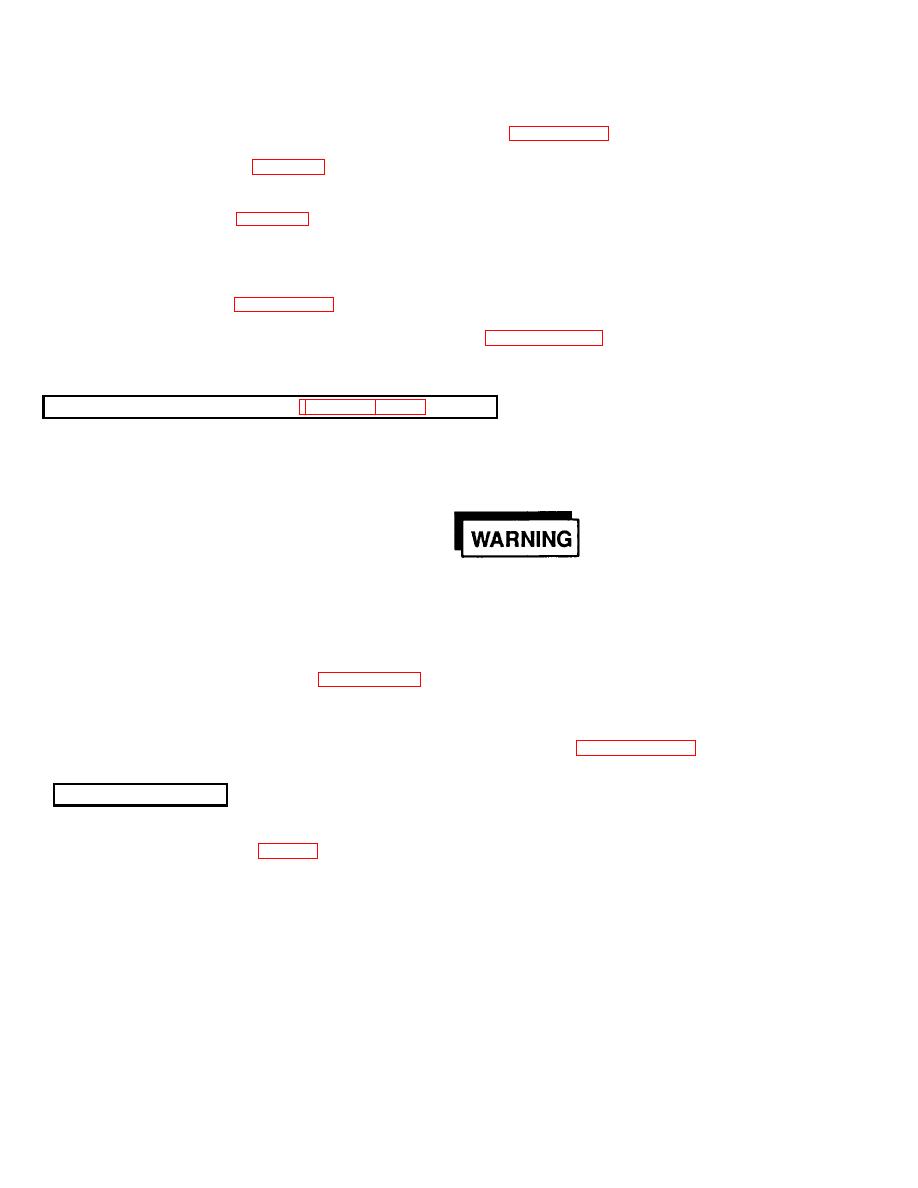 |
|||
|
|
|||
|
|
|||
| ||||||||||
|
|
 TM5-4110-234-14
TO 40R7-5-7-1
(2) Connect a dry nitrogen source to the compressor suction service tee and loosen the flare nut to the
receiver outlet valve. Purge this section of tubing in accordance with paragraph 5-9.
(3)
Debraze (see para 5-12) the tubes to the valve and remove the crankcase pressure regulating valve.
d.
Installation.
(1) Braze (see para 5-12) the tubes to the regulating valve.
(2)
Tighten the flare nut to the receiver outlet valve and remove the nitrogen source connection.
(3) Leak test the valve, the newly connected tubing connections and the tubing connections in the area of
the newly brazed joints per paragraph 5-7.
(4)
Evacuate and charge the system as directed in paragraphs 5-10 and 5-11a.
(5)
Close all access doors.
5-26.
TUBING AND FITTINGS See figure 5-5 or 5-6.
The refrigeration system contains a number of pieces of copper tubing in a variety of material, grades, sizes,
lengths, and shapes, and a number of elbows, tees and adapters in several sizes. Observe the following when replacing
any piece of tubing or fitting in the system:
Be sure the refrigeration system is pumped down or fully discharged and that dry nitrogen
is flowing through the section of the system that you are brazing at a rate of 1-2 cfm
(0.028- 0.057 m3/minute) before brazing or debrazing.
a. Replace tubing and fittings only with equal material, grade, size, length, and shape as the item removed.
b. Leak test in accordance with paragraph 5-7 after any replacement action that required brazing.
c. Replace the filter drier and leak test the filter drier flare fittings as the final step in any maintenance action that
required the refrigeration pressure system to be opened.
d. Evacuate and charge the refrigeration system in accordance with paragraphs 5-10 and 5-11 after all other
maintenance actions are completed.
5-27.
COMPRESSOR
a. Lubrication.
(1) General. (See fig. 2-4). The compressor oil level should be observed with the compressor running. If
the oil level in the sight glass is less than one-eighth (1/8) up from the bottom of the glass, this indicates a low oil level. If
the oil level is up more than one-half (1/2) from the bottom, this indicates a high oil level. Therefore, the oil level should be
1/8 to 1/2 up the sight glass when the compressor is running. The refrigeration unit is shipped from the factory with a full
charge of oil. If a new compressor is installed or if service work has been done to the refrigeration system check the oil
level carefully since very low or high oil levels will damage the compressor.
NOTE
To observe the oil sight glass on the compressor of Model F1000OR-6 it will be necessary
to hold a mirror behind the compressor near the back wall of the condenser section.
5-26
|
|
Privacy Statement - Press Release - Copyright Information. - Contact Us |